Meet the Maker: Mandeep Dhadialla
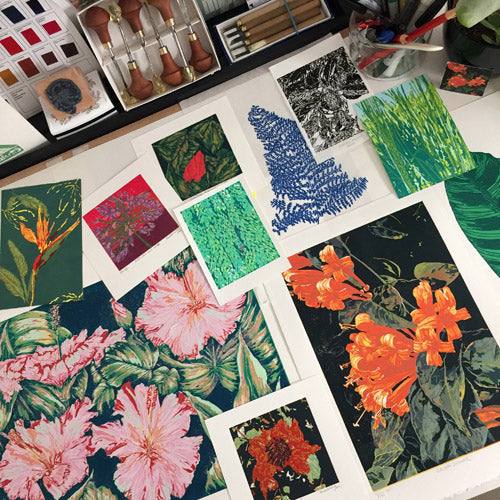
I am an artist printmaker producing original botanical relief prints. I predominantly create reduction linocuts made by carving my drawings on traditional lino and Japanese vinyl cutting surfaces using specialist carving tools, inking with oil-based printmaking inks and printing by hand or with an etching press.
Since May 2018 to date, I have been working on the Garden Plants of Kenya series of linocuts based on my nine-month trip to equatorial Kenya, immersing myself in my printmaking practice for professional development, to build a body of work around a subject about which I feel incredibly passionate – exploring the concept of “what translates as a sense of home, place and comfort?”, now evolving into a wider direction.
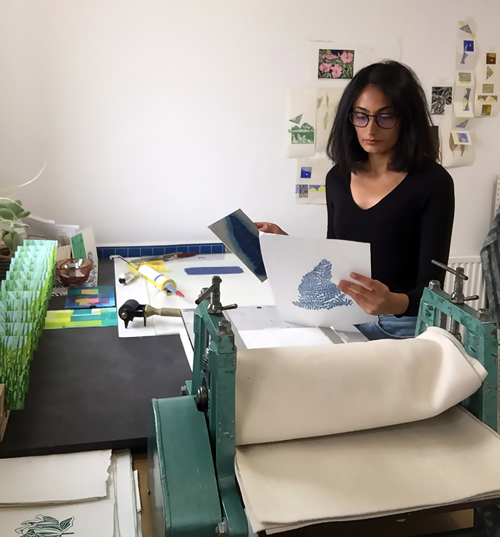
Describe your printmaking process.
I tend to work intuitively. A reduction linocut print begins with an initial, loose plan of the colours and the number of layers involved. The print then evolves organically as layers are built up from light to dark or taking them down again from dark to light. Some linocut prints incorporate a monotype technique of inking up the blocks in a painterly approach, blending colours directly on the lino block, resulting in unique prints within an edition.
A recent development within my practice came from attending a colour mixing workshop with Leicestershire artist painter, Lisa Timmerman, exploring colour and light to convey concepts within my practice. Refreshing my colour mixing knowledge has added value to my printmaking practice.
My colour palette starts life as primary colours plus white. I build my colours from a custom mixed Payne’s grey base where the primary colours are combined then adding a touch of white to bring out the grey. From here, I’ll add more of any core colour I want to achieve in the print – for example, if I want a yellow ochre, I’ll mix in more yellow until I’ve achieved the right shade. For every next layer, I add a touch of the previous colour to the next so it unifies the print more. The colour palette is often exaggerated to reflect the glowing equatorial light and its luminosity on plants, enhancing the vibrancy of their colours.
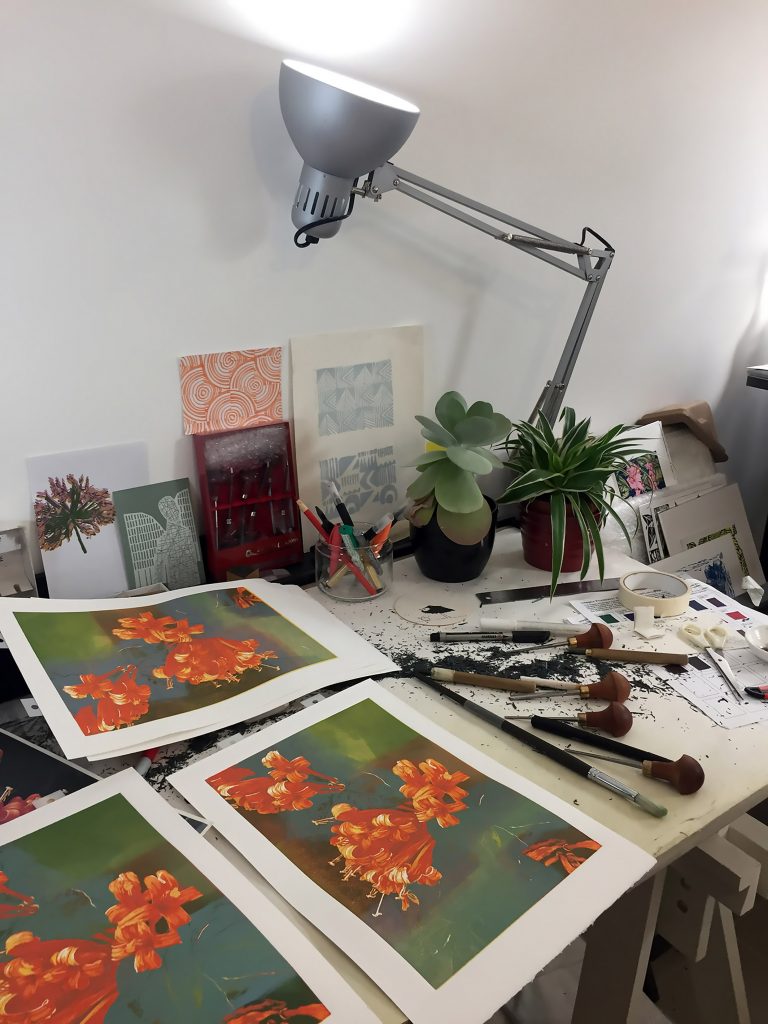
How and where did you learn to print?
I studied Fine Art at DeMontfort University, Leicester, following a foundation course in art and design there. I was mainly painting during my degree. My first foray into the printmaking studio left me hooked – I’d found my medium. My paintings began evolving into print and sidestepped into making abstract monoprints, exploring colour and experimenting with different inking/solution combinations to leave interesting marks.
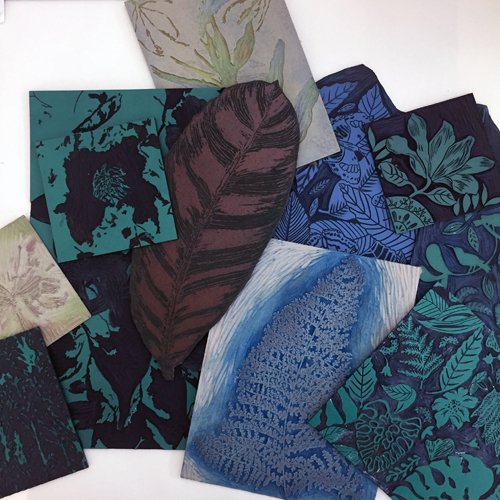
Why printmaking?
Printmaking is such an immersive, meditative, present experience; it sits nicely within my holistic approach in my practice. The repetition involved when printing an edition focuses the mind in relation to the carving and inking process. I like the fluidity in crossing over and combining techniques, bringing a sense of freedom in movement to the work. The industrial aspect appeals to me in terms of hand producing something using age-old traditional methods.
Linocut, and general relief printing, as a technique, lends itself to structure and form in my work through its rigidity, while allowing me to convey linear details. Building variations of colour tones into each layer of a print in the monoprint reduction method allows for observations of natural light to be detailed. Intentional choices are made when selecting the type of block to work with and which type of paper to print on – each to compliment the plant in its form, within its landscape.
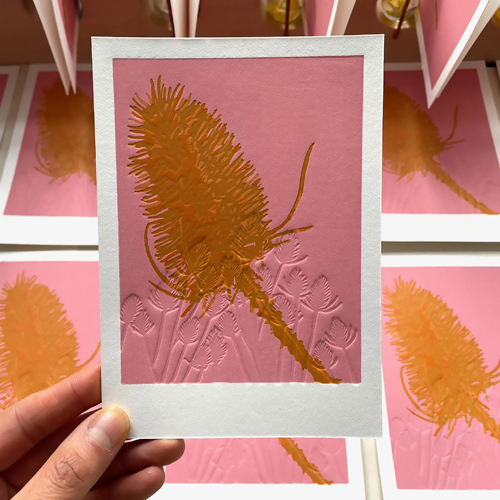
Where do you work?
My home studio is in Leicester. I had my first bricks and mortar studio back in 2016 on a rural Leicestershire farm surrounded by alpacas, horses, donkeys and humans of course, but decided to move it back home after a turbulent life season. Being in this space is the right fit for me for now and I’m grateful for every day spent in my haven.
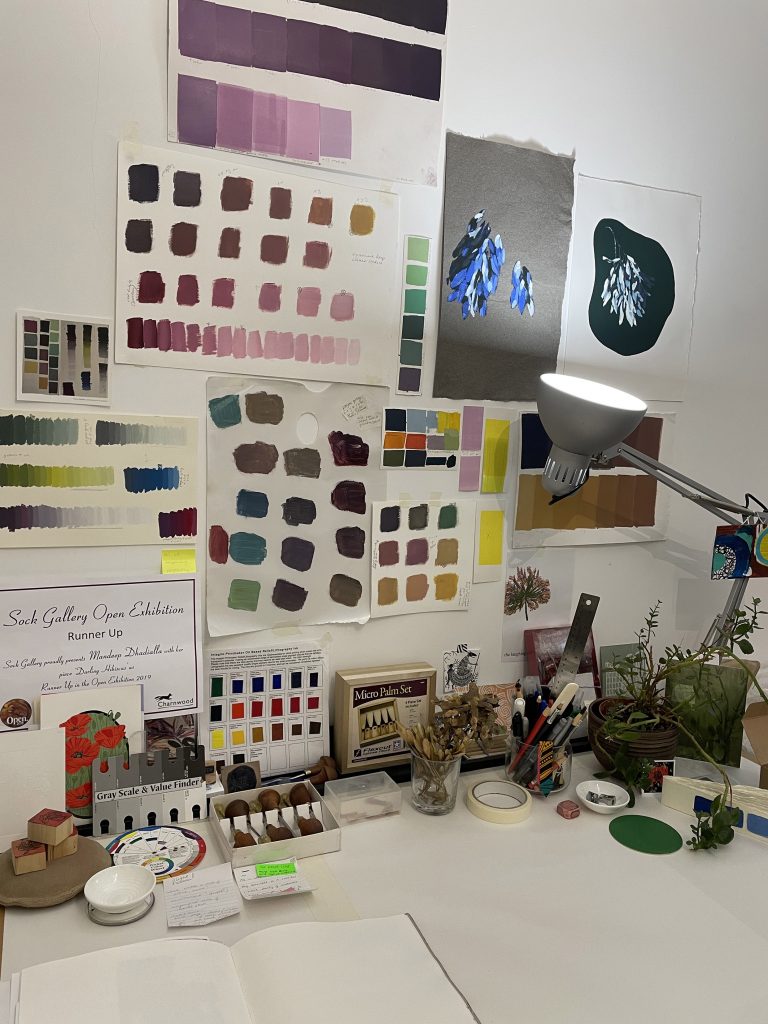
Describe a typical day in your studio.
My practice is incorporated into a way of living for me. A morning of body movement, breathing work and meditation often informs and guides me in planning my day in the studio; sometimes going inwards and seeking stillness before I begin working on a new print or if I need to find a solution to overcome a technical issue. This holistic approach to my practice has been with me for a few years now. The moment I open the studio door, I feel as if I have come home, surrounded by inspiring visuals from other artists, printmaking equipment and materials, each providing a subtle anchoring – I breathe it all in, ground myself and take a seat at my studio desk. Gentle voices from a radio play keep me company during the day. I’ll continue to work on a linocut in progress or begin something new, both equally exciting – that’s the joy of printmaking, every stage is just as engaging as the next; it’s easy to forget there’s a whole world beyond the studio door until I come up for air, early evening. I take regular breaks to pause and think about the next layer or colour mixing recipe. Because of the way I work, this slow approach means I invest my all into every print, a little bit of my soul leaves a mark with every inking and carving.
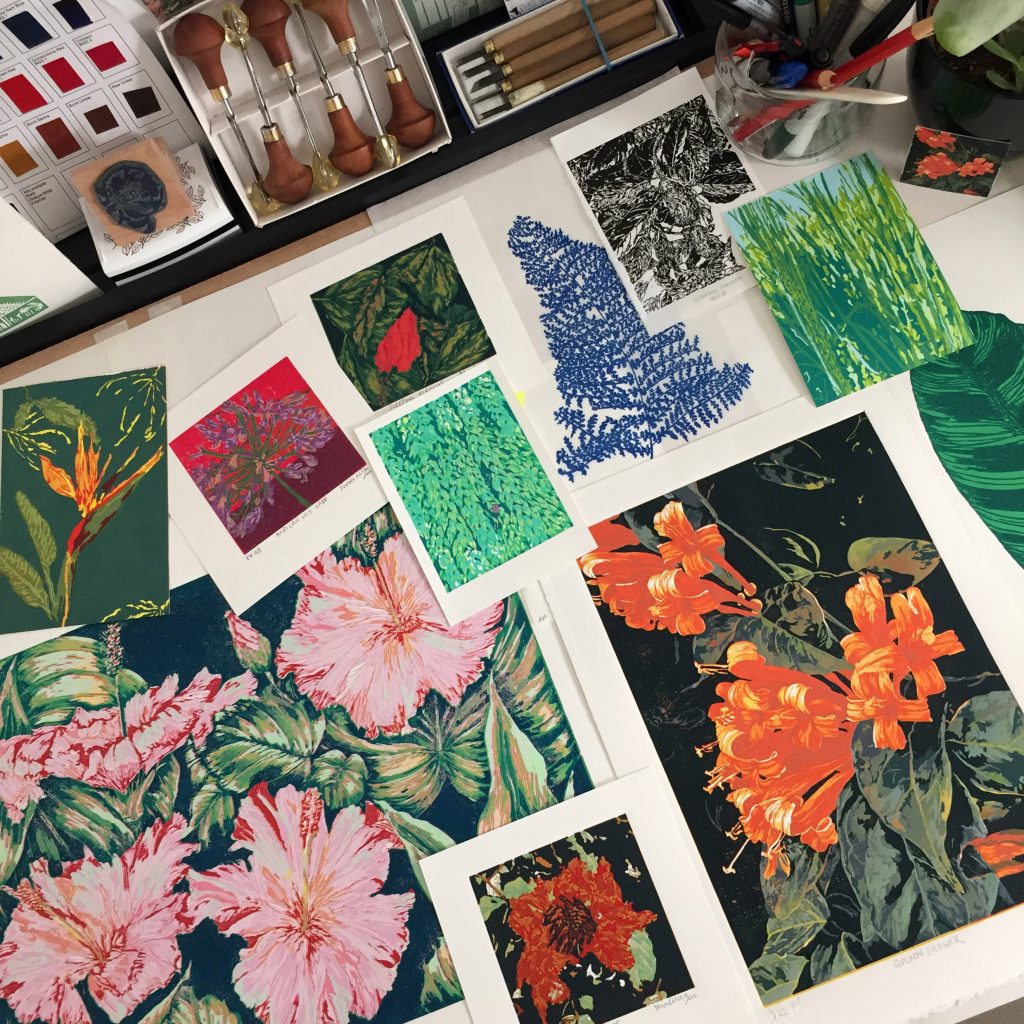
How long have you been printmaking?
Printmaking has been a constant for me since my university days almost twenty years ago. Since then, I’ve had fifteen years of experience alongside teaching with museums and arts organisations working with collections, creatively, and freelancing delivering printmaking workshops. As a dedicated artist printmaker, I’ve been printmaking for three years when I returned to my practice full time in 2018.
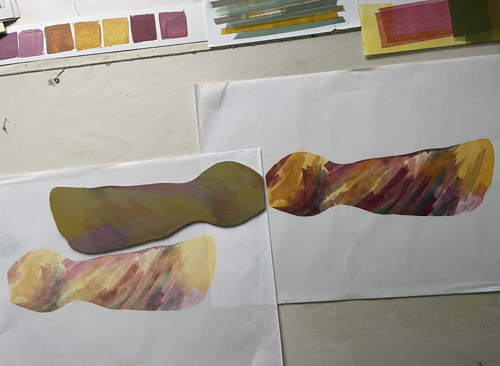
What inspires you?
Spending my formative years in Kenya and visiting annually has given me the valuable opportunity of observing, connecting with and absorbing the surrounding natural beauty found within urban, back-garden flora. Exploring the concept of “what translates as a sense of home, place and comfort?”, by looking at natural light and colour transformations on commonly found plants dotted amidst the red soil, dappled by equatorial day and dusk light, sits within working from life studies or from my photographic collection accompanied with colour studies. I moved to the UK in 1993 at the young age of thirteen years, and the great British countryside has since also been a huge source of inspiration. I’m blessed to have one foot here and the other in Kenya; the latter is where I have my second studio at my parent’s home surrounded by lush, equatorial, un-manicured greenery. Both countries provide a never-ending supply of inner-outer connection with the landscape, constantly feeding my work through gentle guidance.
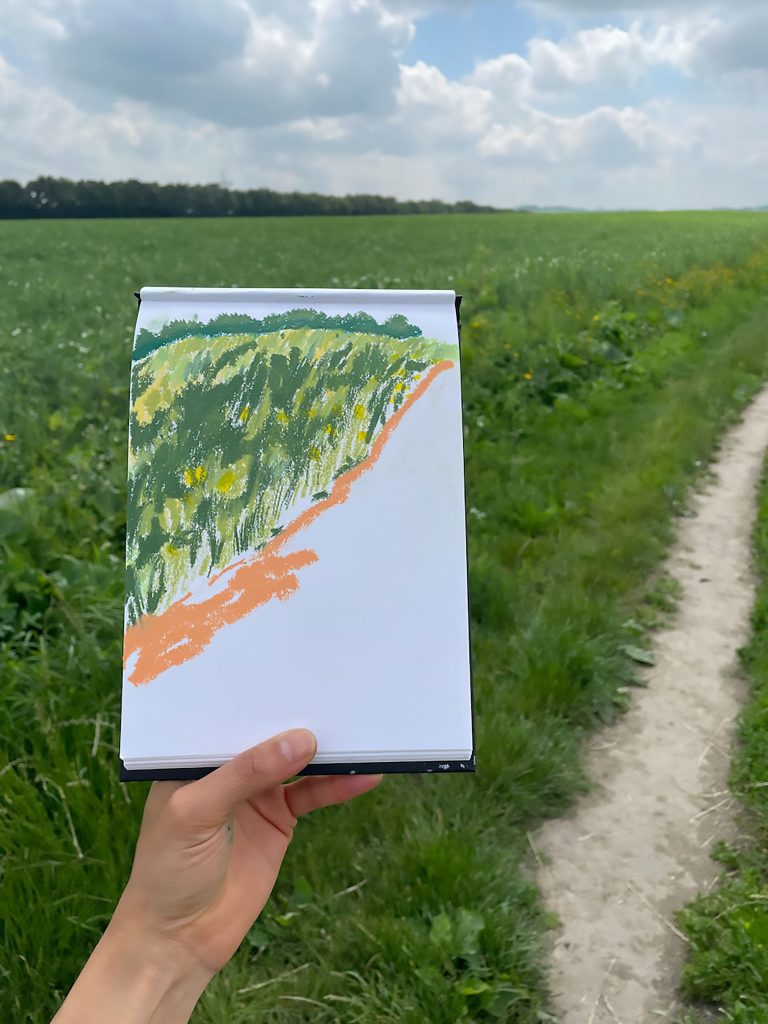
What is your favourite printmaking product?
Hard question to answer as getting hands-on with any printmaking product makes my heart sing! Choosing one, it would have to be the traditional hessian backed grey lino – there’s something about carving on that surface that feels connected to an age-old process coupled with the excitement of creating new work.
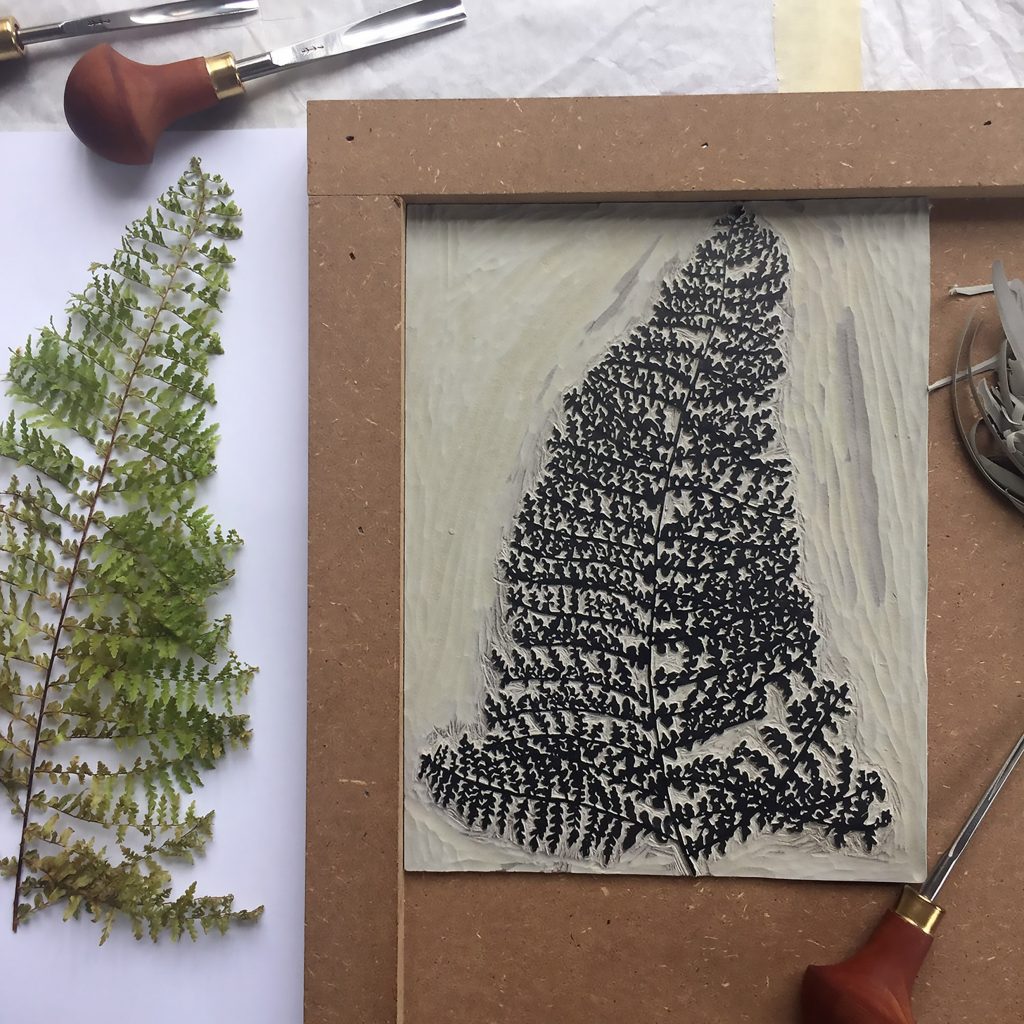
What have you made that you are most proud of?
I made a couple of linocuts I’m most proud of. The first, Darling Hibiscus, always resonates with me as the one that would then, unknowingly, shape my career as an artist printmaker. Made four years ago following what was a tumultuous life change, this print was the catalyst to pressing pause, reset, and in turn allowing me the freedom to develop my practice in an open and fluid way. Darling Hibiscus linocut was made as an ode to my Mum during my long stay in Nairobi back in 2018/2019, a couple of years after she passed. She loved wandering around her equatorial garden; blush pink was her colour.
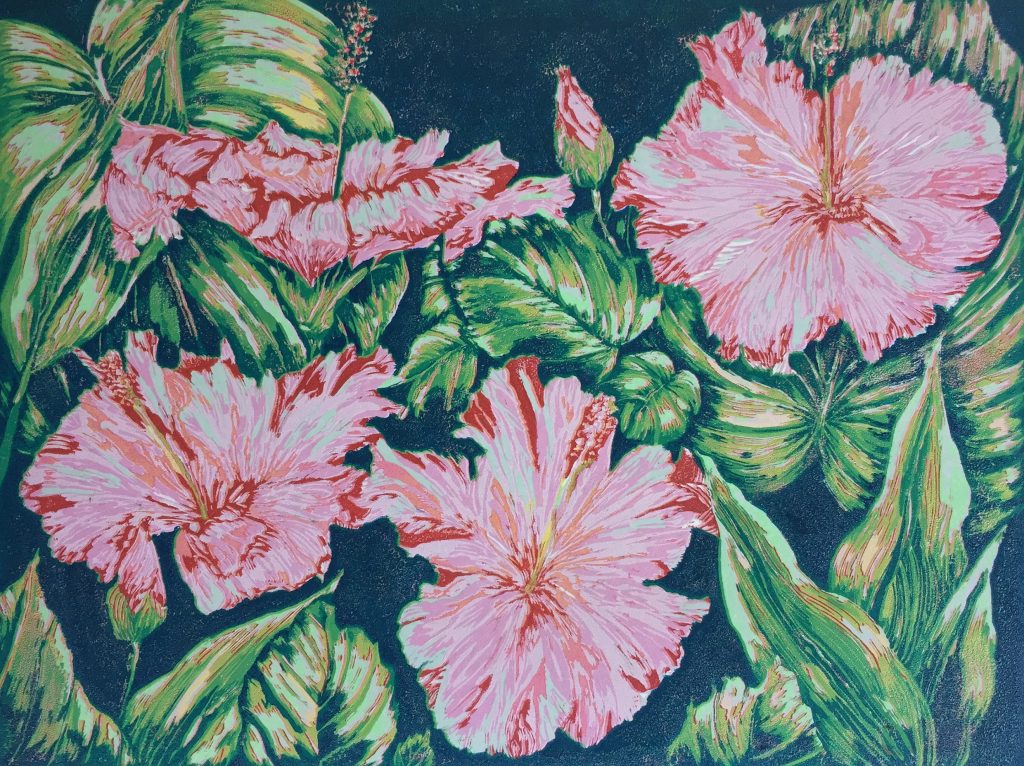
This is the print I got stuck into experimenting with, in inking techniques and inking qualities, without inhibition – it was the print that would form the foundation of my future work, the Garden Plants of Kenya series. Golden Shower linocut is the second print I’m most proud of, a direct influence from Darling Hibiscus, this print went on to win awards at various exhibitions, nationally and internationally. It was bringing this series to life over the last few years that brought plenty of technical learning combined with a renewed sense of a creative, holistic and intuitive approach to my practice.
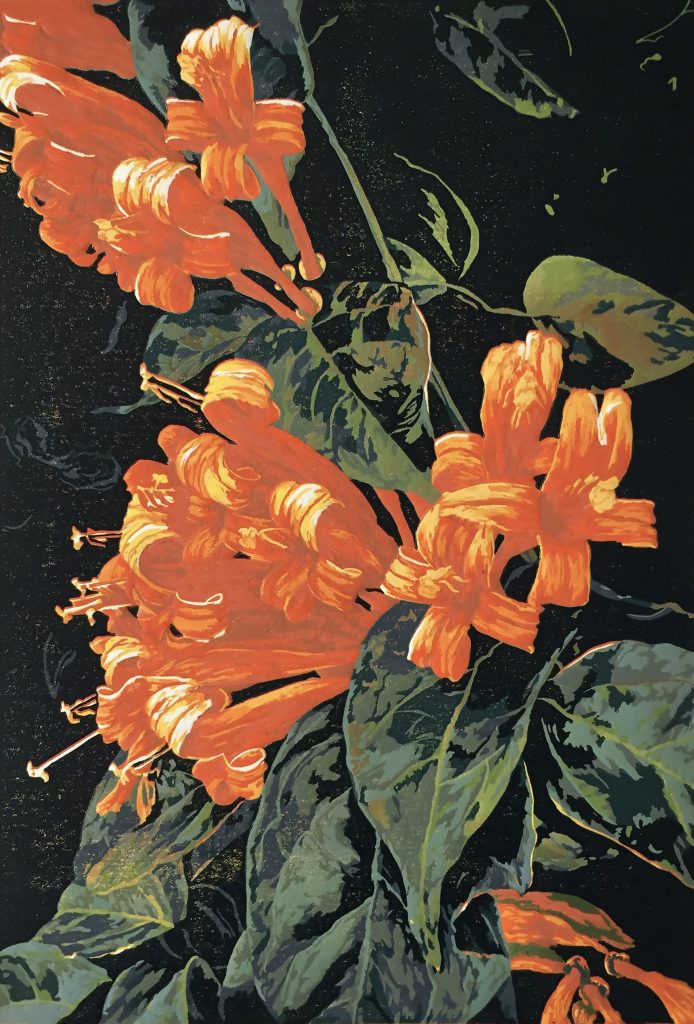
Where can we see your work? Where do you sell?
My Instagram documents behind the scenes processes and printmaker’s thoughts in real-time as it were, including techniques I try and sometimes fail at, which is an important part of being an artist, something I feel we shouldn’t be shying away from in sharing both the successes and lessons. I mainly sell my work from my Website, from Artfinder and soon to be selling at Wistow Gallery, Leicestershire.
During Covid, like many others, I lost income from cancelled workshops, cancelled exhibitions at galleries and more, but underneath all that darkness was the joy of receiving uplifting parcels through my letterbox from my niece and nephews. This simple sharing of giving and receiving ignited a spark; it led me to create TLC Print Club – a postal original print membership where four original prints would land on members’ doorsteps throughout the year along with complimentary handprinted goodies added in along the way. I wanted to extend this circulating energy as a way of bringing light to people’s lives during a tough times. There’s more on my website including gifting a membership to the special people in your circle. Hearing how these little prints put a spring in members’ steps is exactly why I introduced the membership, it keeps me smiling and my printmaking alive. I’ll always be grateful for your continued support.
I also make handprinted and hand-bound books, as featured in the Stylist magazine.
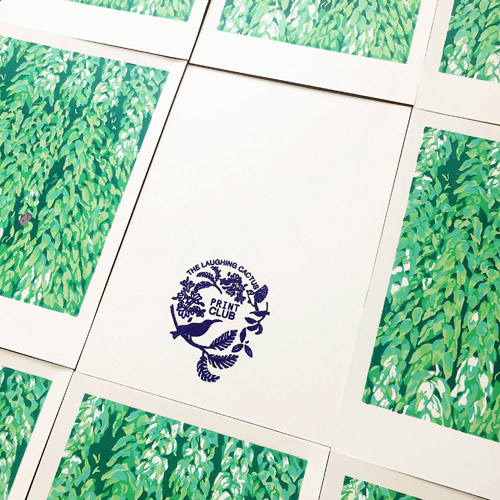
What will we be seeing from you next?
Stillness in Displacement is a concept I’m developing, derived from work I made during Covid exploring the extended theme of “what contributes to a sense of home, place, safety and comfort?”. This new body of work is about producing a series of on-location original print studies around the impact of inner emotional and outer physical displacement, with stillness found in a landscape being the anchor holding and connecting us. Encouraged by reflecting on previous sketchbook work and print studies, I discovered a parallel in the narrative between mental health, immigration, the pandemic and landscape – it is these combined elements I’m beginning to explore.
I’ve also long wanted to commemorate the Garden Plants of Kenya body of work in a book as a sort of visual autobiography with family recipes from my Kenyan-Indian heritage – maybe this will be the year to bring it to life, or at least a draft version!
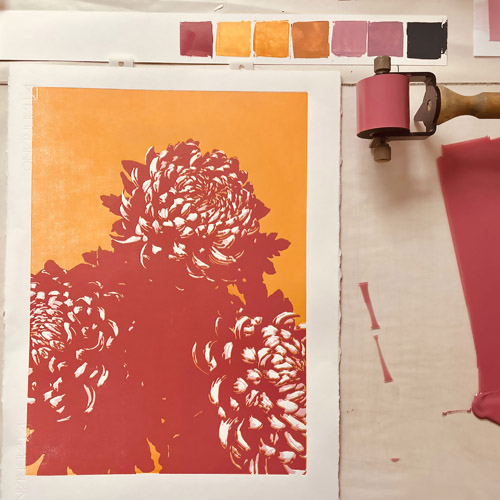
Do you have any advice for other printmakers and creatives?
Over the years of returning to myself as an artist printmaker, I’ve accepted my routine works for me. I’m supported by my holistic approach in many ways and understanding how I work the way I do has come after years of acceptance, making me more productive in my practice and lifestyle. If a schedule works for you which isn’t 9-5, that’s absolutely ok; it can only be a good thing as you open that space to welcoming new and wonderful opportunities into your practice and the wider dynamic.
Have open dialogues with fellow creatives in your circle even if they work differently from your medium – we can all impart knowledge in some way to each other; even the smallest of interactions can invite a whole new perspective and way of working into your practice.
Don’t be afraid to make work following your intuition, even if it isn’t “on trend”.
There’s a place for everyone in the creative world – revel in immersing yourself in the flow of new experiences, direction, and the magic that will follow.
You can see more from Mandeep on her Website, Instagram, Facebook and other social platforms.
